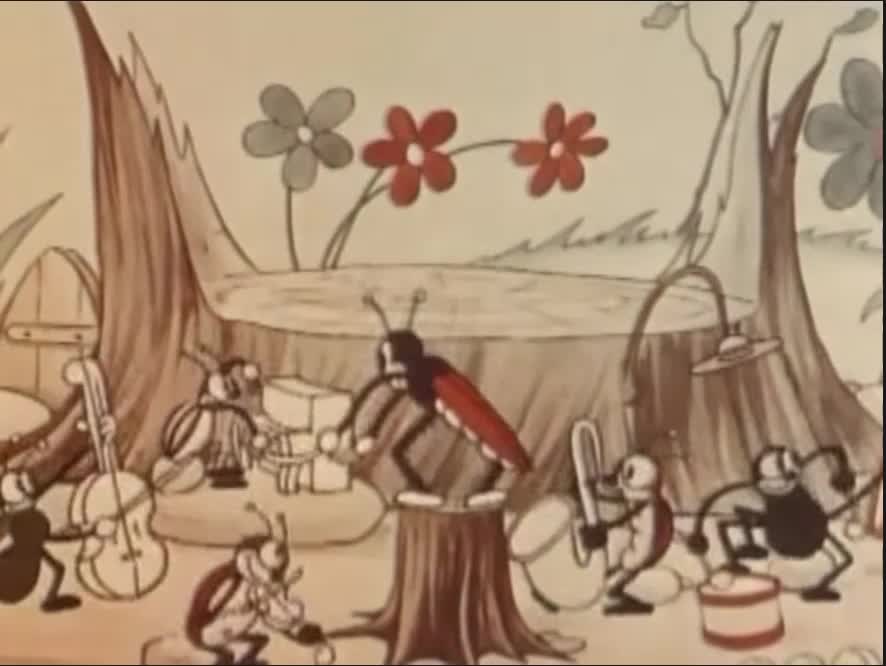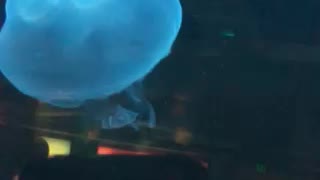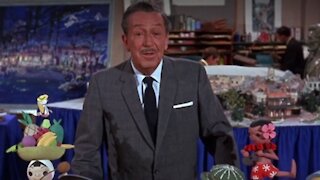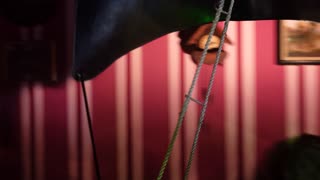Premium Only Content

Fiddlesticks c.1930 : Ub Iwerks vs Walt Disney
Disney magic wasn’t made by Walt Disney alone. Many of Disney’s early successes, before movies, were done in collaboration with Ub Iwerks, who helped to create Mickey Mouse. Then Iwerks and Disney had a falling out in 1930, and Iwerks opened his own animation studio.
There, he created the bow tie-wearing Flip the Frog. And Flip’s big-screen debut short, Fiddlesticks, came as the first complete sound cartoon to use the two-strip Technicolor process. It’s important to note that it was not the first cartoon made in color; that distinction is a matter of debate between 1912’s In Gollywog Land (a lost live-action film based on a racist caricature, which used puppet-animated sequences and was made by the Natural Color Kinematograph Company) and 1920’s The Debut of Thomas the Cat (made by the team of Earl Hurd and John Randolph Bray, who are credited with creating cel animation, at great cost and shot using the Brewster Color process, a Technicolor competitor), neither of which popularized the artistic choice. Fiddlesticks is a simple bit of animation: It starts with Flip dancing and then playing the piano accompanied by a familiar-looking mouse in red shorts playing the violin.
But it is still an achievement. Fiddlesticks came two years before Disney’s own Flowers and Trees, which was the first full-color Technicolor cartoon and won an Academy Award. But it was Iwerks who showed that the burgeoning Technicolor process could be applied to the medium. Technicolor was faster and easier than previous coloring techniques for animation, and the finished product was easy for theaters to screen.
Iwerks and Disney eventually settled their differences, and he went back to work at Disney’s studio in the 1940s. Today, Disney recognizes him as a “master of animation and technology,” a title he richly deserves.
https://www.vulture.com/article/most-influential-best-scenes-animation-history.html
-
 0:18
0:18
sheepie07
4 years agoJellyfish Walt Disney World
952 -
 0:10
0:10
MonicaCoronelMD
4 years agoWalt Disney
262 -
 0:05
0:05
seeWDW
3 years agoNew Walt Disney World Entrance Sign!
110 -
 2:49
2:49
OurHappyPlace
4 years agoWalt Disney World Yacht Club Room Tour
68 -
 7:52
7:52
Just About the Mouse
4 years agoWalt Disney World Epcot Center Future Attractions Preview
139 -
 0:19
0:19
WPTV
4 years agoBrightline, Walt Disney World agree to build station at Disney Springs
21 -
 2:17
2:17
Just About the Mouse
4 years agoWalt Disney World Animal Kingdom Expedition Everest
264 -
 10:42
10:42
BoundingIntoComics
3 years agoDisney Scooper Claims The Company Will Soon Attack Founder Walt Disney As Racist
3.5K2 -
 1:27
1:27
Just About the Mouse
4 years agoWalt Disney World Magic Kingdom 2020 Christmas Cavalcade
85 -
 2:56
2:56
Just About the Mouse
4 years agoWalt Disney World Magic Kingdom Peter Pan's Flight
198